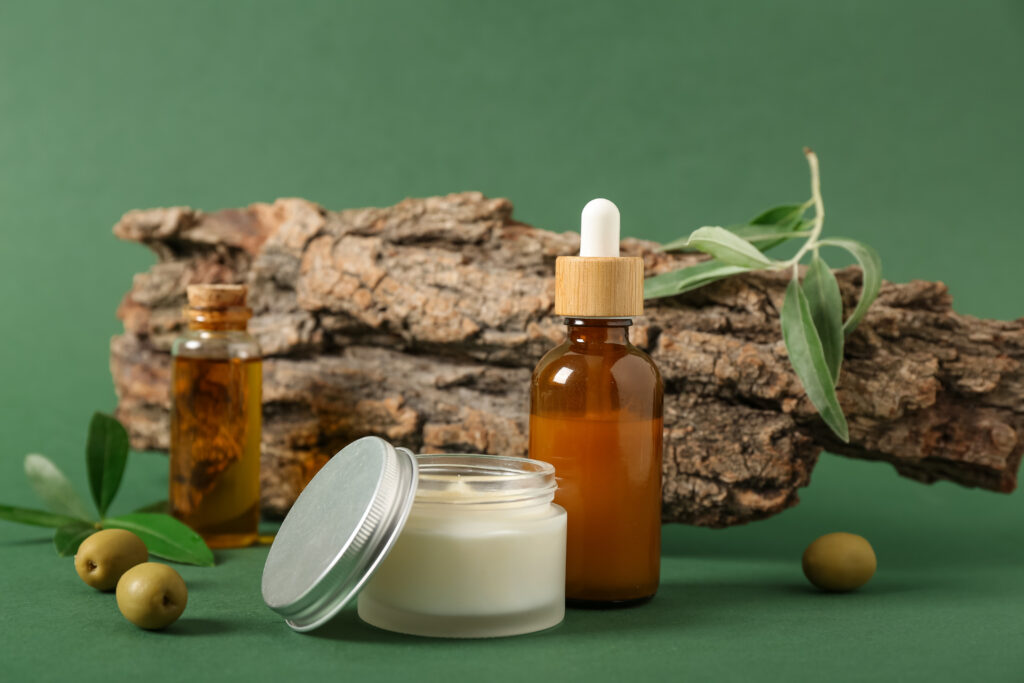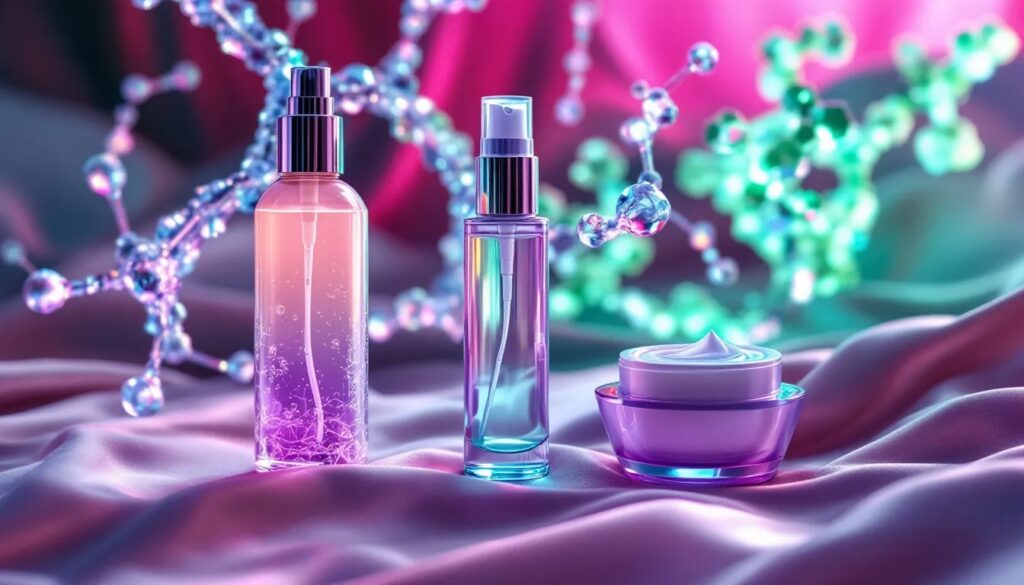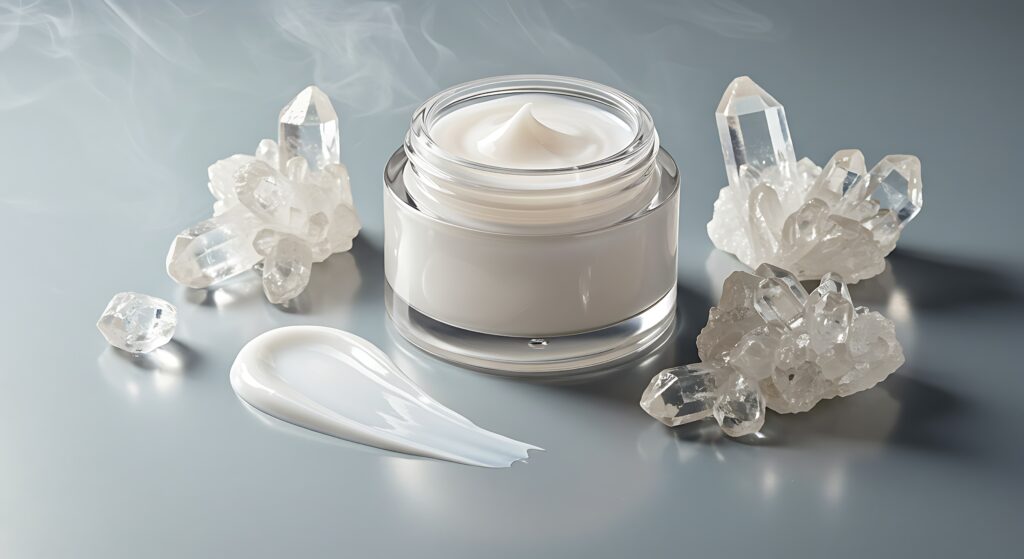Why “Well-Aging” Starts Below the Surface: Fix the Structure, Change the Outcome.
Most anti-aging stories begin and end with moisturization. Yet the visible markers of aged skin—loss of firmness, etched lines, roughness, and dullness—are rooted in deeper structural changes that hydration alone cannot correct. As we age, the skin’s dermal-epidermal junction (DEJ) flattens, and the extracellular matrix (ECM) weakens. Literature in Gerontology, Mechanisms of Ageing and Development, and Biomolecules shows collagen fibril fragmentation, loss of DEJ undulation, and declines in laminin-332 and type IV/VII collagens—changes that reduce mechanical integrity and signaling capacity. If the problem is structural, the solution must be structural.
At the same time, the market is shifting. Longevity has evolved from a buzzword into a measurable ambition for skin care, where brands and consumers increasingly expect solutions that preserve function—not just appearance—over time. CosmeticsDesign and HAPPI highlight this pivot toward health-span framing and evidence-based actives that address cellular or matrix performance rather than surface feel. For development teams, that sets a clear direction: build formulas credibly tied to tissue architecture and cellular crosstalk while meeting expectations for sustainability, minimalist preservation, and premium sensorials.
When Moisturizers Meet Physics: Why ECM Failure Beats Topical Water
The first challenge is biological: aged dermis accumulates fragmented collagen, and fibroblasts receive weaker mechanical cues from the ECM. That combination depresses new collagen synthesis and sustains a cycle of matrix degradation. At the interface, the DEJ loses surface area and anchoring complexity with reported reductions in laminin-332, collagen IV/VII, collagen XVII, and integrin β4—proteins that support adhesion and signaling between basal keratinocytes and the dermis. Moisturizers can mask some consequences transiently, but they do not rebuild the ECM or restore DEJ architecture.
The second challenge is translational: moving from mechanism to a serum that is credible for well-aging claims and manufacturable under current constraints. Formulators need an active that addresses ECM/DEJ dynamics, placed in a vehicle that is stable, sensorially elegant, and compatible with leaner preservation strategies. The formula also has to align with biobased and responsible sourcing without sacrificing performance. The result should be a premium, minimalist-leaning system that supports long-term structure and everyday usability.
The Ce’longevity Formulation Concept – A Targeted, Systems-Level Design
Celebr’age™ Getto (Alpinia speciosa leaf extract) is selected for relevance to aged structure. Building on literature that highlights ECM decline and DEJ flattening, Ce’longevity centers on an active positioned to support matrix organization and cell-matrix signaling. The value proposition is straightforward: target ECM/DEJ biology to influence the root architecture that governs resilience and visible quality, rather than relying on surface hydration alone. This aligns with observations of collagen fragmentation, impaired fibroblast signaling, and loss of junctional proteins.
To make the active work in a modern formula, Ce’longevity uses a 100% biobased dual-booster chassis: AdvensProtect 5 Green (pentylene glycol) and AdvensProtect 2-EHG Green (ethylhexylglycerin). Pentylene glycol contributes humectancy, solubilization, and penetration support that help the uniform distribution of actives. Ethylhexylglycerin adds emolliency and preservation-boosting synergy. Together they enable leaner preservation strategies, maintain sensorial elegance, and support a premium finish that improves regimen adherence.
From Gene Expression to Texture: Translating Data into Sensorial Reality
Why structure matters more than surface alone is well documented. In aged human skin, collagen-rich ECM is not merely reduced; it is reorganized and fragmented, weakening mechanical properties and altering biochemical feedback to fibroblasts. At the interface, DEJ flattening lowers surface area and the density of anchoring complexes and hemidesmosomes that stabilize keratinocyte attachment. These features undermine epidermal renewal and resilience. A well-aging serum should therefore engage ECM synthesis/organization, anchoring protein expression, and the DEJ’s undulating morphology—parameters shown to decline with age.
The Ce’longevity architecture maps to this biology by pairing Celebr’age™ Getto with a vehicle engineered for delivery, stability, and sensorial performance. Pentylene glycol improves solubilization and diffusion for consistent deposition, while ethylhexylglycerin supports milder, more efficient protection through synergistic preservation strategies. In practice, this means better compatibility across water-rich systems, a refined slip without greasiness, and a preservation plan that can be tuned to regulatory and brand preferences. The result is a serum that translates from bench to market with fewer trade-offs: immediate usability with a scientific story anchored in structural endpoints.
Market alignment also matters. Industry coverage points to a durable shift toward longevity and health-span framing in skin care—Blue-Zone inspirations, biomarker-oriented claims, and mechanisms tied to tissue function. Ce’longevity addresses that shift by grounding efficacy in structural biology and building a biobased chassis around it, creating a formulation that is both credible and contemporary.
Beyond the Next Launch: Architectures That Age Well with the Consumer
A practical reframing of anti-aging emerges from the literature: treat the skin’s architecture as the organizing principle. Collagen homeostasis, DEJ morphology, and anchoring complex integrity are not academic endpoints; they are determinants of resilience, elasticity, and smoothness that consumers perceive over months and years. Formulations that systematically support these parameters will outperform approaches that focus on transient water content alone.
For development teams, that means choosing actives that map to matrix and junctional biology, then engineering vehicles that protect those actives, distribute them effectively, and meet sensorial expectations. Ce’longevity’s combination is one blueprint: select a mechanism with structural relevance and build a modern, preservation-efficient chassis around it. The outcome is a serum that performs today and remains credible as the market standard shifts toward long-horizon, well-aging outcomes.
A Credible Path to Well-Aging, End-to-End
Ce’longevity is not a “more moisturization” story. It is a structural story, built on clear evidence that aged skin declines through ECM fragmentation and DEJ flattening. By centering a mechanism-relevant active—Celebr’age™ Getto—and supporting it with a biobased, preservation-savvy vehicle—AdvensProtect 5 Green and AdvensProtect 2-EHG Green—the concept addresses the biological realities formulators face while meeting expectations for sustainability, sensorial excellence, and data-backed performance. It’s a premium, modern well-aging serum designed to be believed—and to be manufactured.
Ready to design for longevity outcomes? Build your next well-aging serum with us.
Share your base, target viscosity range, and preservation preference (lean vs. belt-and-suspenders). We’ll help adapt Ce’longevity to your system, refine sensorials, and align endpoints to structural biomarkers that matter for claims and consumer perception.
Resources
- Langton, A. K., Halai, P., Griffiths, C. E. M., Sherratt, M. J., & Watson, R. E. B. (2016). The impact of intrinsic ageing on the protein composition of the dermal-epidermal junction. Mechanisms of Ageing and Development, 156, 14–16. https://pubmed.ncbi.nlm.nih.gov/27013376/
- Quan, T., & Fisher, G. J. (2015). Role of age-associated alterations of the dermal extracellular matrix microenvironment in human skin aging. Gerontology, 61(5), 427–434. https://pmc.ncbi.nlm.nih.gov/articles/PMC4524793/
- Roig-Rosello, E., & Rousselle, P. (2020). The human epidermal basement membrane: A shaped and cell-instructive microenvironment that aging slowly alters. Biomolecules, 10(12), 1607. https://www.mdpi.com/2218-273X/10/12/1607
- Stern, C. (2024, May 23). Revolutionizing beauty: How longevity science is transforming skin care. CosmeticsDesign. https://www.cosmeticsdesign.com/Article/2024/05/23/revolutionizing-beauty-how-longevity-science-is-transforming-skin-care/
- HAPPI (2025, May). Longevity leads skincare developments (sponsored feature). https://cdn.mediavalet.com/usva/media/Iwat95l5lUqR6G1qAGGdEQ/SwYhgE1sVEu64o1TmKN7nA/Original/happi%202025%20may%20cover%20skin%20care%20%28PHC25-012%29.pdf
Citation Note:
This article relies on peer-reviewed, open-access studies that directly examine DEJ remodeling and ECM degradation in human skin. Gerontology provides mechanistic evidence for collagen fragmentation and impaired fibroblast–ECM signaling, grounding the claim that moisturization alone cannot correct structural decline. Mechanisms of Ageing and Development documents age-linked losses in DEJ proteins (e.g., laminin-332, collagen IV/VII), supporting the need to target junctional architecture. Biomolecules synthesizes how the basement membrane shapes keratinocyte behavior and skin resilience, clarifying why restoring DEJ components is a credible well-aging strategy. All are freely accessible so formulators can verify methods, endpoints, and relevance without paywalls









